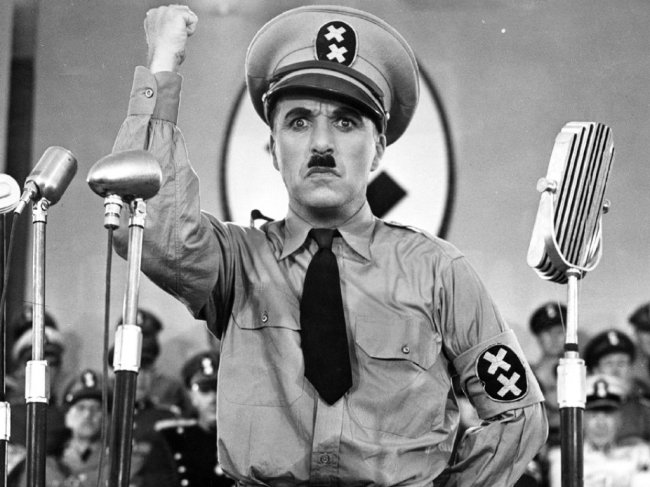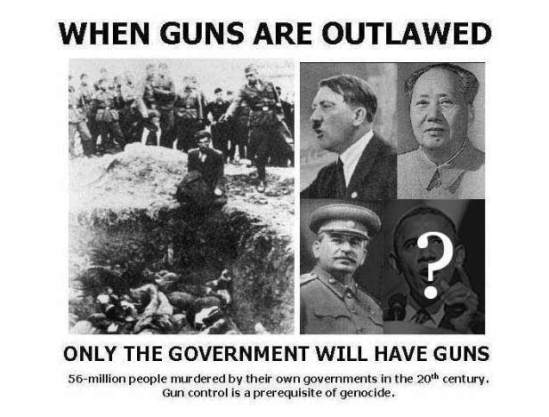
An ongoing argument among pro-gun activists I’ve often heard is the Nazi Gun Control Argument, which claims that Third Reich gun regulations rendered victims of the Holocaust weaker to such an extent that they could’ve effectively resisted oppression if they had been armed or better armed. Gun rights proponents and organizations like the National Rifle Association use this notion as part of its “security against tyranny” argument. They’ve also cited other authoritarian regimes that committed atrocities like Khmer Rouge, Stalinist Russia, and whatever totalitarian regime. Since the Parkland students have called for gun control legislation after 17 of their classmates were killed, the argument that a “well-armed populace is the best defense against tyranny” has been proliferated with a vengeance. During a debate shortly after the February shooting, Alaska’s Rep. Don Young said, “How many millions were shot and killed because they were unarmed? Fifty million in Russia because their citizens were unarmed. How many Jews were put in ovens because they were unarmed?” During a Florida Senate debate over an assault weapons ban, Sen. David Simmons claimed, “Adolf Hitler confiscated all the weapons-took all the weapons, had a registry for everybody,” before murdering his political opponents. This week, Iowa Rep. Steve King posted a meme noting Parkland survivor Emma Gonzalez’s Cuban heritage and attacking her for ignoring “the fact that your ancestors fled the island when the dictatorship turned Cuba into a prison camp, after removing all weapons from its citizens; hence, the right to self-defense.”

Sorry, but Adolf Hitler and his Nazi friends weren’t exactly gun control fans. In fact, they loved their guns. They encouraged children as young as five to march with them and told them nursery rhymes that glorified weaponry. To them, as long as you were a member of the German Master Race, you can stockpile as many firearms as you wanted in order to terrorize all the undesirables at your pleasure. Wikipedia lists the Nazi gun control argument as counterfactual history because most scholars believe that the disarming and killing of Jews had nothing to do with Nazi gun control policy.
However, the very notion that a widespread genocide, totalitarian regime, and other human rights atrocities could’ve been prevented by more private gun ownership is completely wrong. Even today, there is little evidence to suggest that widespread private gun ownership leads to more to more democratic societies. According to the Small Arms Survey rankings from 2007, while the US leads the world in civilian gun ownership (88.8 firearms per 100), but it’s followed by Yemen (54.8). You can argue its well-armed population overthrew an authoritarian leader, but civil war and humanitarian catastrophe following that undermine the case. While Switzerland (45.7) and Finland (45.3) also make the top 10. But also does Saudi Arabia (35), the world’s largest absolute monarchy with rules derived from Wahabist Islamic fundamentalism. And, until recently, famously prohibited women from driving. Iraq is also up there (34.2) which had a well-established gun culture under Saddam Hussein’s rule, which didn’t prevent him from committing genocide and mass murder. Yet, it did contribute to the chaos that ensued after the US overthrew him. Another country with a high rate of gun ownership is Bahrain (24.8) which didn’t help the failed uprising against its autocratic government in 2011. Nor did high gun ownership rates prevent a string of military coups in Thailand (15.6) or keep Venezuela (10.7) from descending into authoritarianism and economic chaos. By contrast, while North Korea virtually has no guns in private hands, neither do South Korea and Japan. Then there’s the sub-Saharan Ghana, one of Africa’s most peaceful and democratic countries which has one of the lowest rates of gun ownership. Another is Tunisia who not only overthrew its dictator in 2011 (with military assistance), but is the only one of the Arab Spring countries that has remained relatively democratic and stable since then. From what the data shows, countries with lots of guns consist of democracies and dictatorships, peacefully orderly societies, and failed states. Same goes for nations with few guns. It shouldn’t even be a debate talking point.
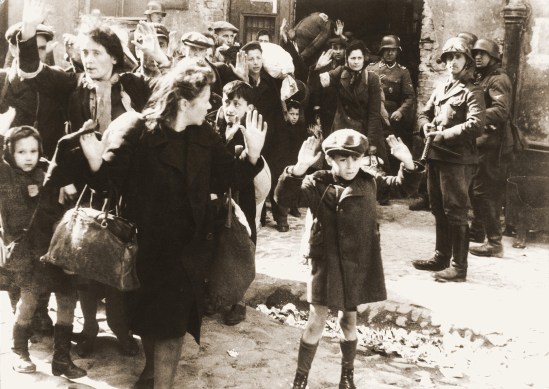
Here’s a picture from the Stroop Report during the Warsaw Ghetto Uprising. Notice the Nazis basically forcing these people to put their hands up. Yes, it’s simply horrifying.
Furthermore, claiming that the Holocaust could’ve been prevented if more people were armed is misleading and offensive. Just ask the Jewish groups, Holocaust scholars, and the US Holocaust Memorial Museum who have all repeatedly called for Nazi analogies to stay out of the gun control debate. Because no serious scholarship of the Holocaust points to the lack of guns as a serious factor. First, it ignores the Jews taking part in armed resistance efforts like the 1943 Warsaw Ghetto Uprising and Jewish partisans creating their own units after escaping the camps. In fact, the US Holocaust Museum has an entire page dedicated to other examples of armed resistance to the Holocaust while Wikipedia lists over 100 of them. But all had little chance of stopping the mass slaughter carried out by a major industrialized power like Nazi Germany since the odds were overwhelmingly. In the Warsaw Ghetto Uprising, after the massive deportations to forced-labor camps and killing centers, people remaining in the ghetto organized and resisted with pistols, grenades, rifles, and automatic weapons. It was the largest Jewish armed revolt during WWII yet only managed to kill from 20 Germans. The Nazis quashed it in less than a month which resulted in 13,000 Jews killed and the remaining 50,000 sent off to concentration camps. Mostly because it was profound mismatch of manpower, the difficulties of smuggling weapons in the Ghetto confines, and a shortage of arms in Poland in general.
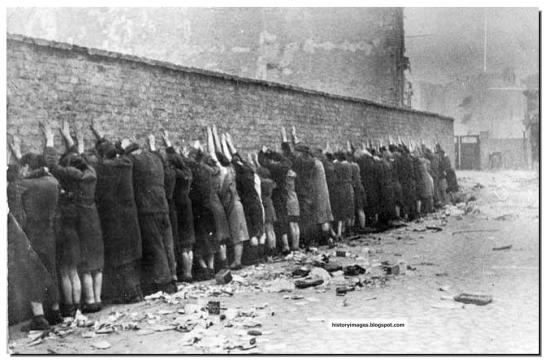
And here’s what happened to some of the Polish Jews who took arms against the Nazis during the Warsaw Ghetto Uprising. Notice how they’ll soon be shot at.
The German public was already disarmed in 1919 at the behest of Great Britain, France, and the United States due to a provision in the Treaty of Versailles which severely limited private firearm ownership to reduce Germany’s ability to re-arm itself. Though post-World War I Germany was awash with weapons. Many in the hands of the wrong people. Far-Right militias called the Freikorps stashed thousands of rifles and machine guns under the Allied Control Commission’s noses and used them in repeat armed attempts to overthrow the democratic Weimar Republic. And while mainstream scholars agree that a German gun registry law that created a permit system to own and sell firearms, it was established in 1928 under the Weimar. There were provisions that exempted “officials of the central government, the states, as well as the German Railways Company” and “community officials to whom the highest government authority has permitted acquisition without an acquisition permit.” This law was an attempt by the Weimar regime to disarm nascent private armies like the Nazi SA (a.k.a. Brownshirts) as an attempt to bring some stability to German society and politics. At the time, violent extremist movements were actively attacking the young and very fragile democratic state with the most prolific being the violent Beer Hall Putsch. So according to Dresden Technical University’s Dagmar Ellerbrock, “this order was followed quite rarely, so that largely, only newly bought weapons became registered. At that time, most men, and many women, still owned the weapons they acquired before or during the first World War.” A government that can’t maintain some degree of public order couldn’t sustain its legitimacy. Nor were the German people well-grounded in Constitutional, republican government as evidenced in their ballot box choices. Gun control wasn’t initiated to benefit the Nazis, but to prevent them and others of the same ilk from executing a revolution against a lawful government. In the strictest sense, the law succeeded since the Nazis didn’t stage a coup. But the 1928 provisions didn’t weaken the existing SA that pervaded German political life at the time. Ultimately, the Nazis ignored them with near impunity, engaging in terrorism on the streets as they expanded their political support. Eventually, they got elected in 1933 on promises to end economic poverty, reconquer “lost territories,” and end political paralysis at the Reichstag.
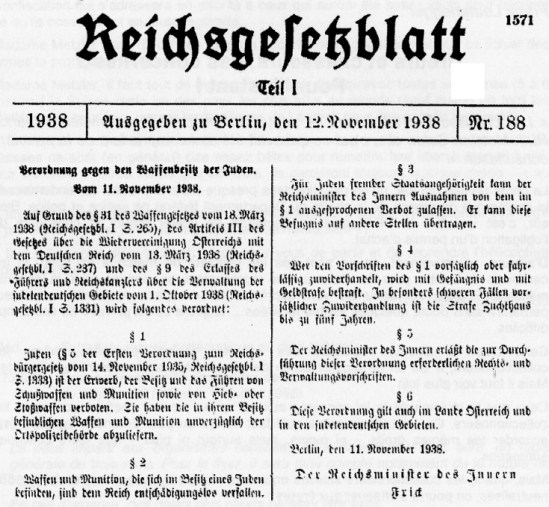
Here are the 1938 Nazi gun laws, which actually expanded gun ownership to most Germans. As long as they weren’t foreign, Jewish, gay, gypsy, disabled, or left-wing, of course. Because the Nazis wanted them dead.
When Adolf Hitler came to power in 1933, the Nazis used whatever gun records they had to seize weapons from perceived enemies of the state like Jews, Communists, Social Democrats, union members, or anyone else refusing to affiliate with the Nazi Party. Because the Nazis were intent on killing them and used the existing gun laws and regulations to further the genocide. As SUNY-Cortland professor Robert Spitzer told Mother Jones, gun policy, “wasn’t the defining moment that marked the beginning of the end for Jewish people in Germany. It was because they were persecuted, were deprived of all of their rights, and they were a minority group.” Yet, according to Ellerbrock, the files included very few guns in circulation and the registry was so incomplete that many Jews kept their guns well into the late 1930s. However, they also introduced a collective gun license for Nazi organization members whose main beneficiaries were the thuggish Brownshirts. After the German Parliament, the Reichstag gave Adolf Hitler emergency powers, he had a free hand. As Ellerbrock noted, “Under totalitarian rule, it took just a few weeks to drastically increase the number of Germans who held private weapons.” In other words, these looser gun rules were meant to encourage citizens to terrorize Nazi opponents and oppress minorities like Jews, gypsies, and gays. In 1938, the Nazis adopted a new law that loosened gun ownership rules by deregulating the buying and selling of shotguns, rifles, and ammunition. It made handguns easier to own by allowing anyone with a hunting license to buy, sell, or carry one at a time. Also, it extended the permit period from a year to 3, lowered the legal purchase age to 18, and gave local officials more discretion in letting people under 18 get a gun. Of course, there were exceptions such as Jews who weren’t allowed to own guns at all along with other dangerous weapons. But for everyone else, Hitler made it easier to get guns and used mass gun ownership for “Aryan” Germans to trash Jewish-owned businesses, rough up Jewish pedestrians on the street, and engage in what were called pogroms in Russia. As Ellerbrock told Politifact, “The gun policy of the Nazis can hardly be compared to the democratic procedures of gun regulations by law. It was a kind of special administrative practice (Sonderrecht), which treated people in different ways according to their political opinion or according to ‘racial identity’ in Nazi terms.” Therefore, disarming and killing Jews had nothing to do with Nazi gun control policy. Thus, during the Third Reich gun registration was spotty, confiscation was selective, and Nazis found it easier to get guns.

Even if Germany’s Jews were well-armed, they couldn’t have stopped the Holocaust. Since they made up of less than 1% of its population and subject to systematic persecution implemented by a modern bureaucracy, enforced by police state, and supported by most of the population. In fact, armed revolt would’ve made the situation worse for Germany’s Jews by validating all the bad stuff the Nazis said about them. At least as far as its propaganda machine was concerned.
But if Germany’s Jews were well-armed, could they have stopped the Holocaust? The fact they constituted less than 1% of the country’s population makes it ridiculous to argue that private firearm possession would’ve enabled them to mount resistance against a systematic persecution program implemented by a modern bureaucracy, enforced by a well-armed police state, and either supported or tolerated by most of the German population. Its highly unlikely that armed Jews (or any other target group) would’ve weakened Nazi rule, let alone a full scale popular rebellion. In fact, it seems more likely to strengthen the Nazi support they already had. For such actions would’ve substantiated any foul Nazi lies about Jewish perfidy as well as hasten Jewish demise. The German Jews detained and deported after 1938 tended to be older and less well-off since most Jews with any resources left Germany much earlier. And the deportation took place with the open or tacit approval and complicity of most of the German people. Any act of armed resistance would’ve been completely futile.

Here’s a Jewish business smashed on Kristallnacht, or “Night of the Broken Glass” from November 9-10, 1938 where Brownshirts and German civilians terrorized Jewish buildings, businesses, and synagogues while authorities looked on. It’s estimated that 91 Jews were murdered that night, though the death rate was much higher. Also, 30,000 Jewish men were arrested and sent to concentration camps. Still, Germany’s Jews were in no way prepared for what awaited them. Nor could they imagine taking arms against their own country’s soldiers and police officers.
Even so, hypotheticals aside, gun ownership wasn’t widespread enough in Germany for a serious civilian resistance to the Nazis. Nor were Germans, particularly Jews, predisposed to violent resistance to their government. Anti-Semitism wasn’t new in Germany or anywhere else since they had been persecuted throughout history for centuries. Jews had survived previous pogroms before but not without suffering. They’d expect the barrage of anti-Jewish discrimination and violence would eventually subside and permit a return to normalcy like those in the past. Still, they considered themselves “patriotic Germans” for their World War I service who remained good citizens of the state they trusted beyond Hitler’s power seizure in 1933. As an overwhelmingly professional, urban and middle class, and strong in professions like law, medicine, and the arts, the notion these conscientiously law-abiding people would or could’ve taken to the streets and shoot down Hitler’s thugs is ludicrous. Those who didn’t flee into exile faced escalating barrage of discriminatory laws and were systematically dehumanized for years. Yet almost all obeyed to the letter. Even after their businesses, homes, schools, and hospitals were trashed and synagogues torched during Kristallnacht, and even when facing deportation and death, most Jews obediently reported to the holding centers with their suitcases as instructed, and were taken from there to the cattle trucks that hurried them to their deaths. They didn’t know the true horrors that awaited them in the concentration camps. In fact, as bad as things were for them in Nazi Germany, most Jews couldn’t imagine their fellow countrymen establishing an industrialized and scarily efficient mass murder system to kill them. The Nazis also used deception by telling their Jewish captives would be “resettled” for forced labor in the East. The death camp stops on railroads were disguised with signs showing they were regular train stations. The gas stations were referred to as “showers.” If they knew their fate, they probably wouldn’t have resisted. Since they’d be unable to bring themselves to fire upon their own nation’s soldiers or police officers. And what could they do about it. Though most of the 6 million Jews killed during the Holocaust came from Poland, the Soviet Union, and other conquered territories in Eastern and Central Europe. Yet, all were surrounded by an indifferent, hostile, or terrorized population. Other than a few exceptions, there was no place to run or hide.

In Nazi Germany, propaganda was everywhere. Also, despite that they’d be forever remembered for committing genocide as a totalitarian regime, Adolf Hitler and his Nazis were genuinely popular among the German people. And that’s truly scary.
Besides, the Nazis controlled the media during the Third Reich, they could censor and spin the news at their discretion. They were masters of propaganda which saturated every level of their society at every age stratum. Not surprisingly, the Jews were a primary target who were systemically demonized. If most German citizens didn’t come to Jewish defense to fight off Nazi tyranny, it was because they didn’t want to. For they had been persuaded that what was happening was best for their country, and that the Jews deserved what they got. Or at least didn’t want to lose their privilege, alienate their friends and family, or be carted off to a prison camp and executed. Because the Communists tried to assassinate Adolf Hitler several times before the Nazis stamped them out. Even if Europe’s Jews fought back, which they did several times over, it would’ve been almost impossible for them to attract the rest of the world’s attention, let alone draw sympathetic reinforcement that could’ve toppled Hitler. But the Jews didn’t need guns to draw attention or sympathy from people in other countries were concerned what was going on with them. After all, many Jewish Americans were refugees or had relatives in Europe at the time. And Kristallnacht sent shockwaves around the world with the British Times writing, “No foreign propagandist bent upon blackening Germany before the world could outdo the tale of burnings and beatings, of blackguardly assaults on defenseless and innocent people, which disgraced that country yesterday.” Yet, the Nazis also had financial or rhetorical support from numerous American tycoons and businesses like Henry Ford, William Randolph Hearst, Kodak, Coca Cola, Standard Oil, Chase Bank, Dow Chemical, Woolworth, Alcoa, Brown Brothers Harriman, General Motors, and IBM. Let us not forget the Nazi sympathizers on the America First Committee like Charles Lindbergh who didn’t want the US to welcome Jewish refugees. Across the pond, Britain’s Duke and Duchess of Windsor were also in the Hitler fan club along with Unity and Diana Mitford. French fashion designer Coco Chanel lived with a Nazi officer while WWI hero Marshal Philippe Petain led the collaborationist Vichy government during WWII. Norwegian politician Vidkun Quisling seized power in his country through a Nazi-backed coup and his regime contributed to the Final Solution. Let’s just say you had a lot of influential people outside Germany who didn’t want their countries to do anything about what was going on there.
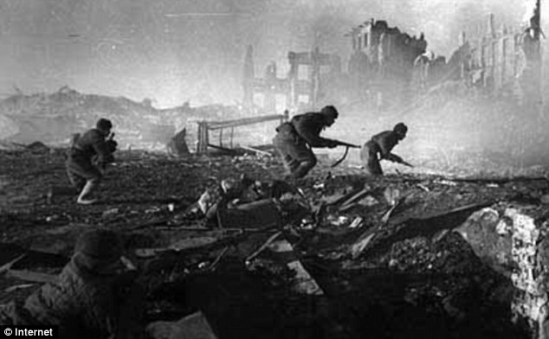
We must keep in mind that Nazi Germany managed to defeat armies from Poland, the Netherlands, Belgium, Denmark, and France. And though they didn’t fare so well in Russia, they managed mow down 7 million Red Army soldiers.
As Warsaw Uprising illustrates, the notion that the Jews could’ve used rifles and handguns to stop the SS from herding them like cattle to their deaths is offensive. Inside Germany, only the army possessed the physical force necessary for defying and overthrowing the Nazis. But the generals already threw their support for Adolf Hitler early on. The Nazi Germany war machine was one of the most powerful military systems ever constructed, especially prior to and during the early years of World War II. The Nazi regime had managed to conquer all of France, the Netherlands, Denmark, Norway, and Poland, along with huge swaths of the Soviet Union and northern Africa in the face of determined resistance by large, properly trained militaries equipped not just with handguns but also tanks, warships, airplanes, and other heavy superweapons. The Red Army lost 7 million fighting the Wehrmacht despite its tanks, planes, and artillery. Adolf Hitler deployed military-trained units to destroy Europe’s Jews so handguns and rifles wouldn’t have made a dent. Suggesting it would implies that the Jews had a path to resist the Nazis’ Final Solution when they didn’t. Arming every European Jew wouldn’t have made any difference.
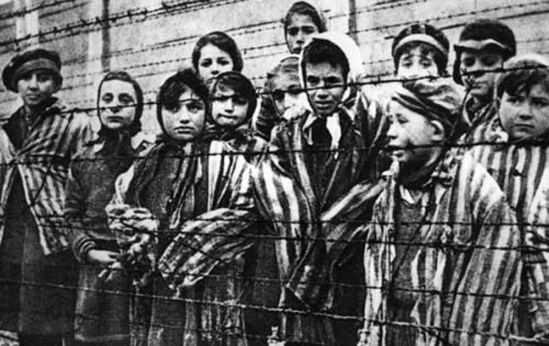
We must understand that atrocities like the Holocaust have happened not because of gun control or lack of guns. But when a large swath of the population doesn’t see them as a dealbreaker and are willing to embrace a totalitarian strongman in order to get what they want. The Holocaust was caused by anti-Semitism along with moral failure and indifference. To think it could’ve been avoided if people have been armed is a very offensive way to remember this unimaginable tragedy.
It’s all too easy to forget the allure that fascism presented to those in the West during times of social and economic upheaval. The Nazis were master manipulators of popular emotion and sentiment while disdainful of people thinking for themselves. Adolf Hitler and the Nazis came to power not through force of arms, but through success at the ballot box, propaganda, illegal violence, and Hitler’s political cunning. They didn’t just rise to power by intimidation and imposing totalitarianism, the Nazis were genuinely popular with enough of the population to prevent a coup. Nor did they need gun control to retain supreme and unlimited power. Shortly after being granted emergency powers, Hitler issued the Reichstag Fire Decree which suspended civil rights, banned the left-wing press, and authorized the mass arrest of Communists and Socialists (a move allowing Nazis to take seats of the arrested delegates and assume a Nazi majority). A month later, the Nazi majority Reichstag passed the Enabling Act, giving Hitler and the German Cabinet the power to enact laws without its involvement. These 2 acts transformed Hitler’s government into a legal dictatorship within 2 months. Within the next 6 months, the Nazis banned Jews, non-Germans, and political opponents from public service, outlawed trade unions, and barred all political parties aside from the Nazi Party. The success of Nazi programs like restoring the economy and dispelling socio-political chaos and the misappropriation of justice through terror assured the German people’s compliance. Else, they wouldn’t have loosened gun restrictions in 1938 as an effect a façade of legalism around exercising naked power like most of their actions. The 1938 weapons law wasn’t a part of normal governance since the Third Reich had demolished the rule of law. And while Jews were prohibited from owning guns, they weren’t allowed to many other things. They couldn’t vote, work in professions, attend school, go to the movies or theater, visit public parks or “Aryan” areas. In fact, Jews weren’t considered citizens of Nazi Germany or even human beings. To focus exclusively on gun control is to lose sight of the bigger picture. And suggesting that the only thing keeping Hitler in power was gun control only exonerates the many Germans who supported him.
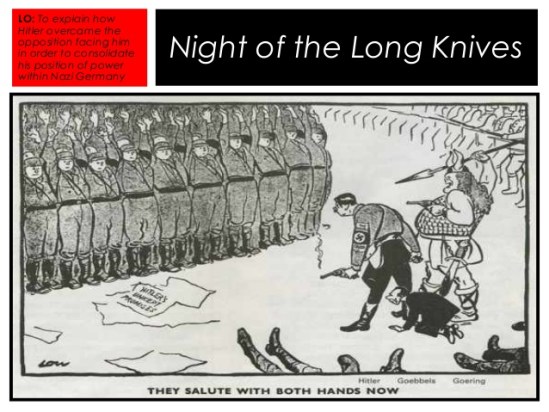
Here’s a cartoon depicting the Night of Long Knives where the Nazi regime killed their most prominent political enemies. Most were Brownshirt leaders. And yes, they were armed and the Nazis knew it. Most gave up without a fight.
Despite that while the Nazis confiscated weapons from people they didn’t like, Adolf Hitler didn’t need to seize weapons to get rid of perceived political enemies. Their gun laws weren’t the major part of the process to suppress political dissidents and round up German Jews for extermination. Take the Night of the Long Knives, for instance, which involved a series of extrajudicial executions to consolidate Hitler’s absolute hold on German power. Paramilitary organizations were part of the Nazi organization from its earliest days in the mid-1920s. A founding Nazi street fighting group were the Sturmabteilung or Brownshirts who were known for street violence tactics. Its leader Ernst Rohm was one of Hitler’s oldest allies and comrades. Another outfit called the Schutzstaffel or SS protected Nazi officials as they moved around the country. After Hitler won office, the SS under Henrich Himmler became part of Der Fuhrer’s inner circle. But Rohm was eager to consolidate his power, setting him on a collision course with established German military leaders and Hitler’s top advisers. They persuaded Der Fuhrer that the Brownshirts were difficult to control so he and that Rohm was plotting a coup. From June 30-July 2, 1934, the SS and Gestapo killed at least 85-200 Brownshirt leaders and other perceived enemies. Though the final death toll could be as many as 700-1,000 along with thousands of arrests. Most but not all were associated with Rohm. The incident had more to do with infighting among the Nazi community than with going after disarmed citizens. Quite the opposite for the Nazis knew full well they were going against a group with plenty of weapons. Hitler himself oversaw the Rohm’s arrest, which went down in the middle of the night with a truckload of armed Brownshirt troops driving up to a hotel. Not a shot was fired and Rohm complied. He was executed 3 days later. Those at the German Historical Institute wrote that with this operation, Hitler had managed to “legitimize outright murder on a large scale – without any legal proceedings whatsoever – and that the country largely accepted the Nazi propaganda that presented this strike as necessary.”
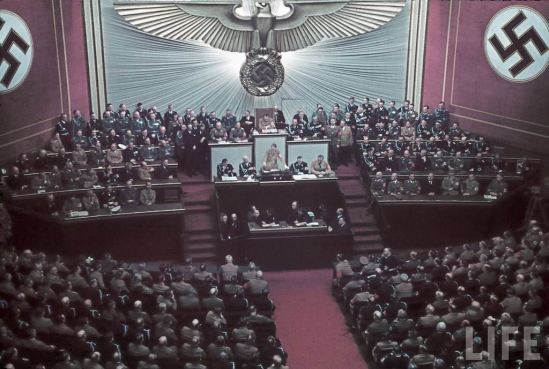
Dictators don’t rise to power by taking away people’s guns. But rather through popular support and public purges to send a message to anyone who disagrees with them. If soldiers come to your door to kill you or take you away for speaking out against a Dear Leader, your private arsenal will not save you. In fact, it might even condemn you.
Nonetheless, the notion that if Jews were armed and could’ve prevented the Holocaust is ridiculous is an old claim the NRA and other gun rights people push to show that who are trying to show that when a civilian population is armed, it can prevent tyranny and that tyrants begin their rise to power by disarming the population. However, the fundamental problem with these claims is that they have no idea how and why dictators like Hitler and the Nazis come to power. Dictators come to power through a more gradual process aided by large swaths of citizens eagerly supporting the strongmen in charge and public purges of dissenters to send a message anyone still supporting the regime. By the time soldiers come marching to your door to kill or drag you away, it’s because they’ve been chosen and groomed for this task. And you’ve been demonized as a traitor who must be punished. Keeping a weapons stockpile will only be used to justify overwhelming force or murder. There’s a very long historical record of regimes hell-bent on crushing dissent seeing them as little more than nuisances which won’t even be recorded once the dark deed is done. If a military coup is involved, then it would’ve been made possible with the wide availability of guns along with widespread support for the insurgents from the people as was the case with the Communist takeovers of the Soviet Union, China, and Cuba. Tens of millions of people became victims in the 20th century because they were members of groups targeted for eradication over ethnicity, religion, or ideology by ruthless military dictatorships. While these massacres had concurrent efforts to disarm targeted populations thanks to gun registration requirements, to say those millions died because of gun control is bad history. It’s nothing short of delusional to think that small groups of untrained civilians could defeat some of the most powerful armies in the world. History shows that civilians are often powerless to militarily resist an oppressive dictator. We can only prevent genocide by strengthening democracy as well as supporting a free press and non-government organizations. Thinking gun control in the United States will lead to genocide abandons reality for a fantasy world.
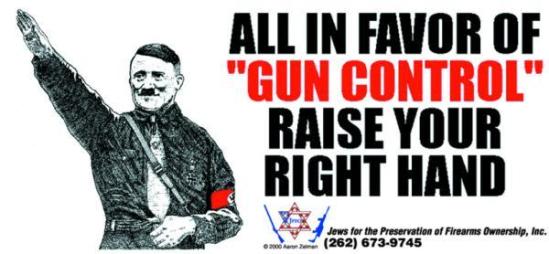
Blaming the Holocaust on the lack of guns allows people to ignore the real causes of the genocide like Nazism, Anti-Semitism, moral failing, and indifference. And it allows people to ignore how the Nazis stripped the Jews of more basic rights. Not to mention, it misrepresents history which isn’t just intellectually dishonest but also dangerous.
Blaming the Holocaust on the lack of guns allows people to ignore the Nazism and anti-Semitism along with the humanity’s moral failure and indifference that made its atrocities possible in the first place. The fact that gun culture considers the Jews’ lack of guns of more consequence than their lack of more basic rights says a great deal more about America’s gun culture than it does about the Nazis or the Jews. And even if they get it right about what the German gun laws did, they misrepresent the significance and consequences from those laws. Misreading history to suit one’s views is as intellectually dishonest as it’s dangerous. As Brown University historian Omer Bartov told Salon in 2013, “Their assertion that they need these guns to protect themselves from the government — as supposedly the Jews would have done against the Hitler regime — means not only that they are innocent of any knowledge and understanding of the past, but also that they are consciously or not imbued with the type of fascist or Bolshevik thinking that they can turn against a democratically elected government, indeed turn their guns on it, just because they don’t like its policies, its ideology, or the color, race and origin of its leaders.”


















































































